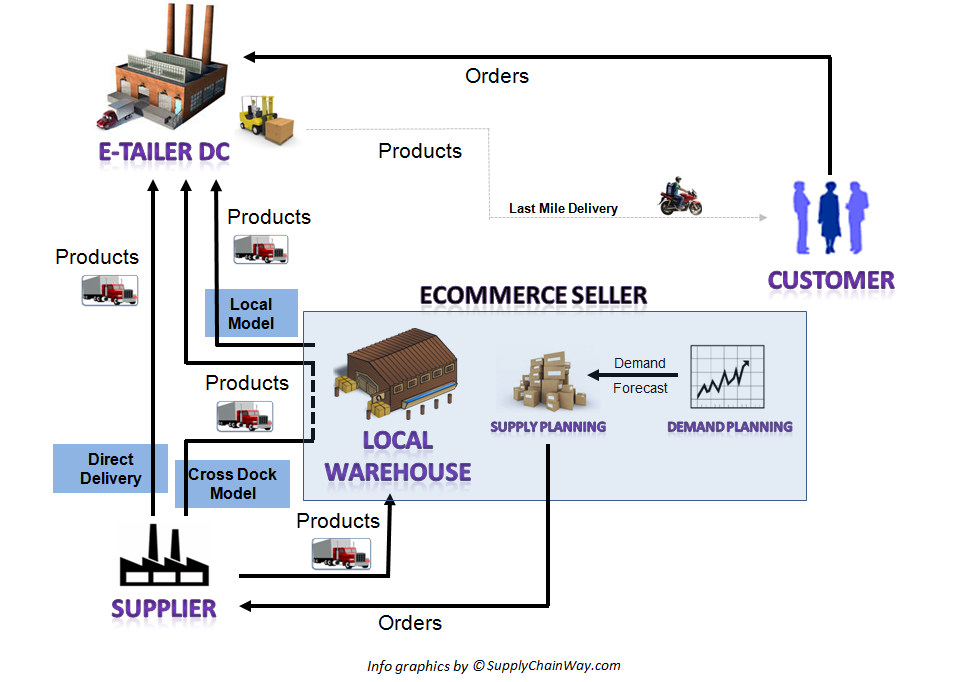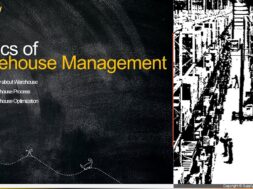
Best Supply Chain Practices for a Healthy Business
Best supply chain practices for E-commerce sellers to be profitable: –
Supply Chain Management (SCM) is the back bone of any business and the context of business in this article is from an E-Commerce Seller stand point and also since most of the key products are stocked at E-Tailer’s (Online Retailer) warehouses, the article is written keeping only Fulfilment by E-Tailer in mind. With the boom of E-Commerce business in India, more and more sellers are getting on-boarded into E-tail. Though many of these sellers operate as OMNI Channel, most of them started to fully focus on their E-Commerce vertical. I even know Sellers who have totally shut down their offline business and gone fully online. With this the dependency on the E-Commerce channel is very high.
An Optimized SCM Model will ensure effective utilization of all resources, thereby healthy cash flow.
In an Ecommerce business, the major functions within supply chain are demand planning, procurement, warehousing and logistics.

Key Performance Indicators in Ecommerce Supply Chain:
There are multiple factors which impact the success of an Ecommerce business. But there are two critical success factors which impact the performance of the business. They are,
-
Stock Availability
– Directly impacts the top line of the organization; a stock out situation will result in loss of business.
-
Inventory Management
– Inventory levels estimated from best inventory management practices strike the right optimization between supply chain costs and the customer service levels.
Healthy Supply Chain Practices
The critical success factors described above will be achieved by following healthy supply chain practices. The most preferred measurement of Supply Chain costs is by measuring Supply Chain cost as a percentage to Sale value. The bench marking value for supply chain cost as a percentage to sale is between 5-15%. (Note: This varies within the given range for each Industry.)
The Top 4 best practices on supply chain which will ensure a healthy organization are:
-
Choose the right Supply Chain Model
The right supply chain model sets the base for the entire supply chain operations. There are 3 Supply Chain models (refer above illustrative figure):
Direct Model
In Direct model the products are shipped from the Supplier directly to the E-Commerce player’s Warehouse. It is the most preferred supply chain model since there is no inventory liability on the seller; but at the same time in direct model the seller’s performance is totally dependent on the supplier’s performance.
Local Model
In Local Model the products are shipped from supplier to the seller’s local warehouse and stored there. The E-Tailer’s warehouse is replenished from the Local warehouse. One of the two main reasons for choosing a local model is (i) Very high lead time (supplier to E-Tailer warehouse) in Direct Model which demands huge stocks at E-tailer’s warehouse and (ii) poor delivery performance by the supplier resulting in stock outs and loss of sale. These two supply chain issues are fixed by having local stock to ensure product availability and reduced lead times.
Cross Dock Model
In Cross Dock Model, the products reach local warehouse for some value addition at local warehouse and then shipped to E-Tailer’s Warehouse. The value addition could be Labelling, Packing, Branding and Kitting etc. In Cross Dock Model products are not stored at the Local warehouse. Cross Dock Supply Chain Model is used only when operationally the seller decides to have the value addition done at his warehouse.
-
Prioritize and Focus on your Top Products
The entire Supply Chain is impacted by the demand forecast and the forecast accuracy from best of the best forecasting models is only 60-65% and even lesser than that. Due to this uncertainty, there will be always a need for tighter controls; most times flags and follow ups are needed.
In a seller portfolio of hundreds and thousands of products, it is unproductive to have a close watch on all products. The right thing to do is to identify the crucial products to the business using a list of parameters. Those products are usually termed as Golden SKUs (Products) or Platinum Products.
For example, a simple Pareto Chart can identify you the top 20% of your portfolio products which contribute 80% of your profits. Focus and spend the maximum effort on the products that are crucial for the overall business to ensure there are no lapses. End of day if these products perform well, the business performs well for sure.
-
Evaluate and shorten lead times
Lead time is the time taken from the time an order is placed on a supplier till the product is received at the warehouse. Most times it is measured in days. Lead times have a huge impact on the stocking level; stocking level directly impacts the inventory carrying cost and also adds a lot of risk to the business.
In nutshell – to have an efficient and responsive supply chain, shorter lead times (as possible) is a must.
Though Just-In-Time (JIT) is great for the business, JIT is not possible at every supply chain scenario. Hence, the goal is to constantly evaluate the current supply chain and try to reduce the lead time of the product.
-
Rely more on Actual Supply Chain data
Day to day Supply Chain generates millions of vital data. These Supply Chain data points are the most reliable source of information for any business.
To name a few key data points – sales, margins, inventory, stock out, turn over, lead time, variability etc. The Supply Chain data points have to be captured, processed and analysed; the key Supply Chain decisions should be backed up with this data. The more we relax the dependency on the forecast, the more risk we can mitigate.


















